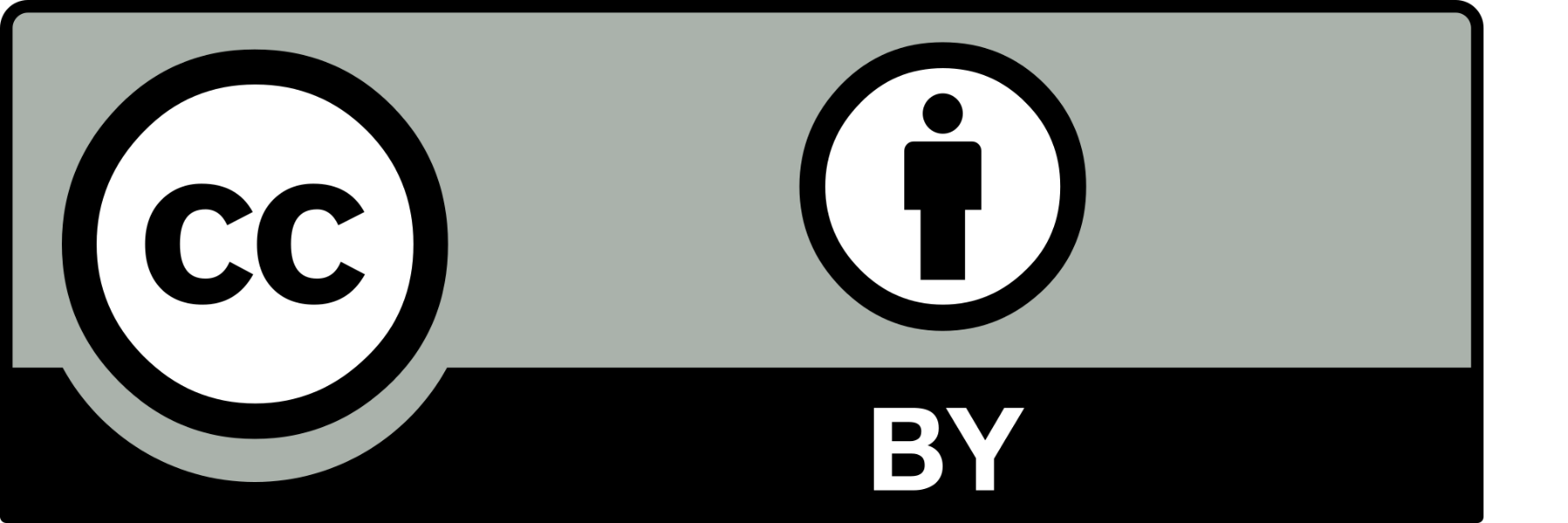

The content on this page is licensed with a CC BY 4.0 License. You are free to share, remix, edit, adapt or modify this content, as long as you provide attribution. Further permission is not required. Credit should be given to University of Massachusetts Boston's Healey Library Collections and Scholarly Communications Department.
Interacting with Copyrighted Work:
A compilation of separate works from different sources
Example: An anthology of short stories from different authors
In this scenario, each individual item has its own copyright properties applied. If you want to gather each item into a collection, you must cite each item appropriately, applying designated licenses, and providing attribution for every single item.
"CC TV Dinner" by Nate Angell. CC BY. From "tv dinner 1" by adrigu" used under CC BY and various Creative Commons license icons by Creative Commons used under CC BY.
If a single work in your collection is licensed with CC-BY-NC, you may not re-share the entire collection commercially.
"CC Smoothie" by Nate Angell. CC BY. Derivative of "Strawberry Smoothie on Glass Jar" by Element5 and various Creative Commons license icons by Creative Commons used under CC BY.
This depends. First, ensure that:
Using copyrighted content for your research and scholarship can be confusing and stressful. If you truly must use something that is locked-down by copyright, there are four factors you must consider before deciding to use the work under conditions of Fair Use. These for factors are:
Use this checklist to ensure that you have considered everything about sharing your work with the world, including attribution preferences, how you want your work to be used, and if you want your work to be able to be modified or adapted by other creators. Find the downloadable form below.
Finding Appropriate Content
[ ] Have I searched specifically for openly licensed content?
[ ] Have I verified the license of each resource I plan to use?
[ ] Have I checked if the license terms are compatible with my intended use?
[ ] Have I confirmed the content I want to modify doesn't have a "No Derivatives" license applied to it?
[ ] Have I checked for any additional conditions specified by the creator or rights holder?
Understanding Usage Rights
[ ] Do I understand what the specific CC license allows me to do with the content?
[ ] If the license is "NonCommercial," have I confirmed my use qualifies as non-commercial?
[ ] If combining multiple openly licensed works, have I checked for license compatibility?
[ ] Have I identified any elements that might be under different licenses within the work?
[ ] Do I need to contact the original creator for any clarifications or additional permissions?
Proper Attribution
[ ] Have I included the title of the original work in my citation?
[ ] Have I credited the original author/creator?
[ ] Have I included the source URL where I found the content?
[ ] Have I specified the type of CC license the original work uses?
[ ] Have I indicated if I made any changes to the original work?
[ ] Have I formatted the attribution according to best practices?
[ ] If I've modified the work, have I indicated what changes were made?
ShareAlike Compliance
[ ] If using a ShareAlike (SA) licensed work:
[ ] Am I sharing my new work under the same license?
[ ] Have I clearly indicated the license on my derivative work?
Fair Use Considerations (for copyrighted content)
[ ] If using copyrighted material under fair use claims:
[ ] Have I evaluated all four factors of fair use (below)?
[ ] Have I limited the amount used to what is strictly necessary?
[ ] Is my use transformative (using it for a different purpose)?
[ ] Is my use for educational/non-profit purposes?
[ ] Have I documented my fair use reasoning?
Distribution and Sharing
[ ] Have I included all required attributions in my redistributed materials?
[ ] Have I clearly indicated which license applies to my adapted work?
[ ] Have I preserved any copyright notices from the original work?
[ ] Have I documented where my content came from for others who might use my work?
[ ] If I've combined works with different licenses, have I clearly marked which parts are under which licenses?
Institutional Compliance
[ ] Does my reuse comply with my institution's copyright and intellectual property policies?
[ ] Have I checked if my institution has specific guidelines for using open educational resources?
[ ] If using in a course, have I properly cited all materials in my syllabus or course materials?